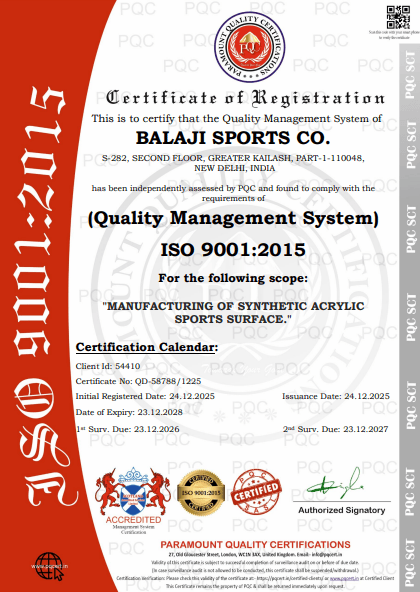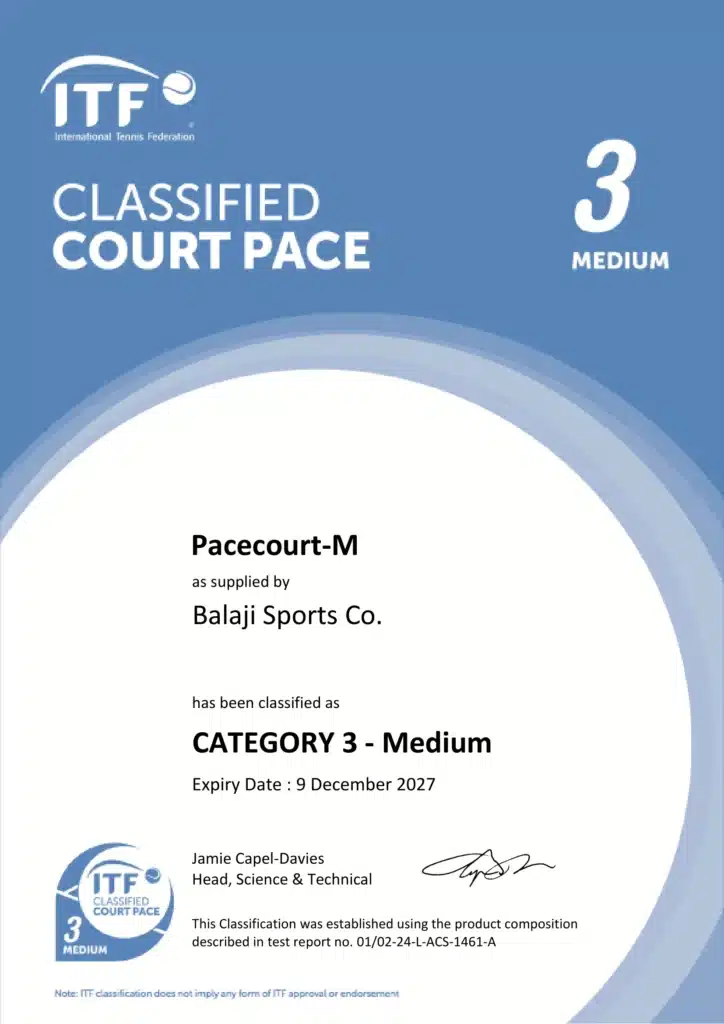How to Convert a Tennis Court into a Pickleball Court
As sports trends evolve, the demand for multi-use play areas is growing. One sport leading the charge is pickleball—a fun, fast-paced, and inclusive game for all ages. With its rapid rise in popularity, many communities, clubs, and schools are now looking to convert tennis court to pickleball court to make the most of the space and meet growing demand. Why the change? Simply put, pickleball is played on a much smaller court so that multiple games can be played at once on a single tennis court. It’s a cost-effective and efficient use of existing infrastructure. In this guide, Pacecourt—your go-to source for high-quality synthetic acrylic flooring materials—breaks down the differences between tennis and pickleball courts, the benefits of conversion, and walks you through the entire process of converting. Key Differences Between Tennis and Pickleball Courts Before you start converting, you need to understand the structural differences. Knowing how pickleball courts differ from tennis courts will ensure accuracy and playability during conversion. Benefits of Converting a Tennis Court to a Pickleball Court Converting a tennis court into a pickleball court has many practical and community benefits. It’s not just space-saving—it’s an investment in the future of recreational sport. Conversion Options When you convert a tennis court to a pickleball court, you can go with temporary or permanent (or semi-permanent) solutions depending on your budget, how often you’ll use it, and what you envision for the long term. A. Temporary Conversion Perfect for recreational play, community gatherings, or sampling interest in pickleball prior to investing in a complete conversion. Temporary conversions are fast, inexpensive, and completely reversible. You can: Use collapsible pickleball nets that can be quickly put away and pulled out. Use temporary court markings with tape or chalk that can be eliminated or moved when desired. Return to a complete tennis court configuration whenever you desire. B. Permanent or Semi-Permanent Conversion For neighborhoods that are fully committed to pickleball, a more fixed arrangement is sensible. This entails: Because most conversions occupy around 50% of the tennis court, there is still some space available for multi-use set-ups or combining tennis and pickleball courts into shared playing surfaces. 4. How to Convert: Step-by-Step Converting a tennis court flooring to a pickleball court flooring requires planning and precision. Here’s a step-by-step guide to help you do it smoothly. 1. Existing Tennis Court Inspection: Start by assessing the surface, orientation, and space on the court. An ideal surface should be smooth and crack-free. Decide if a full conversion or mixed-use installation is best for your community. 2. Type of Conversion: Choose between a single-purpose pickleball court or a blended court with two uses that keeps tennis lines. Blended courts are flexible; single-purpose courts are more defined playing experiences. 3. Court Line Marking Learn how to outline and position your pickleball court properly: 4. Net Setup: You can lower the existing tennis net to 34” in the middle or put up a pickleball net for official play. 5. Optional Resurfacing: Add some flair to the court with acrylic finishes, anti-skid coatings, and special color treatment using Pacecourt’s high-grade acrylic sports flooring for better grip, safety, and durability. Gameplay Rules and Scoring Both pickleball and tennis have rackets, nets, and court play, but the rules and scoring systems are quite different, and that changes strategy and pace. In pickleball, games are played to 11 and you must win by 2. Importantly, only the serving side can score so every serve is a big deal. Serves must be underhand and diagonal and clear the net and land beyond the 7-foot non-volley zone (kitchen). This zone prevents players from volleying too close to the net, adding a new tactical layer. Tennis has a more complex scoring system of points, games, sets, and matches. Players can score on both serve and return. Serves are overhand, and there’s no non-volley zone, so players can play more aggressively at the net. These differences make pickleball more accessible and faster paced, especially for beginners and older players, and tennis demands more endurance and technique. Number of Pickleball Courts on One Tennis Court One of the biggest benefits of converting tennis courts into pickleball courts is space efficiency. Because pickleball is played on a much smaller court, you can use existing facilities without needing more land. Materials and Surface Recommendations For safe and durable play on your converted pickleball courts, you need to choose the right materials and surface treatments. The court surface affects player performance, comfort, and injury prevention. At Pacecourt, we specialize in premium acrylic sports flooring and offer a wide range of pickleball court flooring and tennis court flooring materials. Whether you’re converting a full or partial court, Pacecourt’s products deliver quality, durability, and playability for every level of sport. Maintenance Tips Post-Conversion Now that your tennis court has been converted to a pickleball court and is up and running, it’s important to keep it maintained so it remains safe, looks good, and plays well for years to come. One of the easiest and most important is regular surface cleaning. Removing dirt, leaves, and debris prevents the surface from deteriorating and maintains traction, reducing the risk of slips and falls. Repainting the court lines every year keeps the borders sharp and visible, especially important for pickleball’s smaller courts and strategic areas like the non-volley kitchen. Clear lines also look professional and improve play. Net maintenance is also key. Check the nets regularly for wear, tear, or sagging. Adjust the tension to keep the net at 34 inches at the center for consistent play. Finally, look for cracks on the surface, bubbles, or peeling. Fix these early with resurfacing or repairs to avoid more costly damage down the road and extend the life of your court. By following these maintenance tips, you’ll protect your investment and have a great playing experience. Best Sports Flooring for All Sports: Smooth Performance & Strong Grip Multi-Purpose Court Flooring Badminton Court Flooring Volleyball Court Flooring Basketball Court Flooring Walking Track Flooring Cycle Track Flooring




